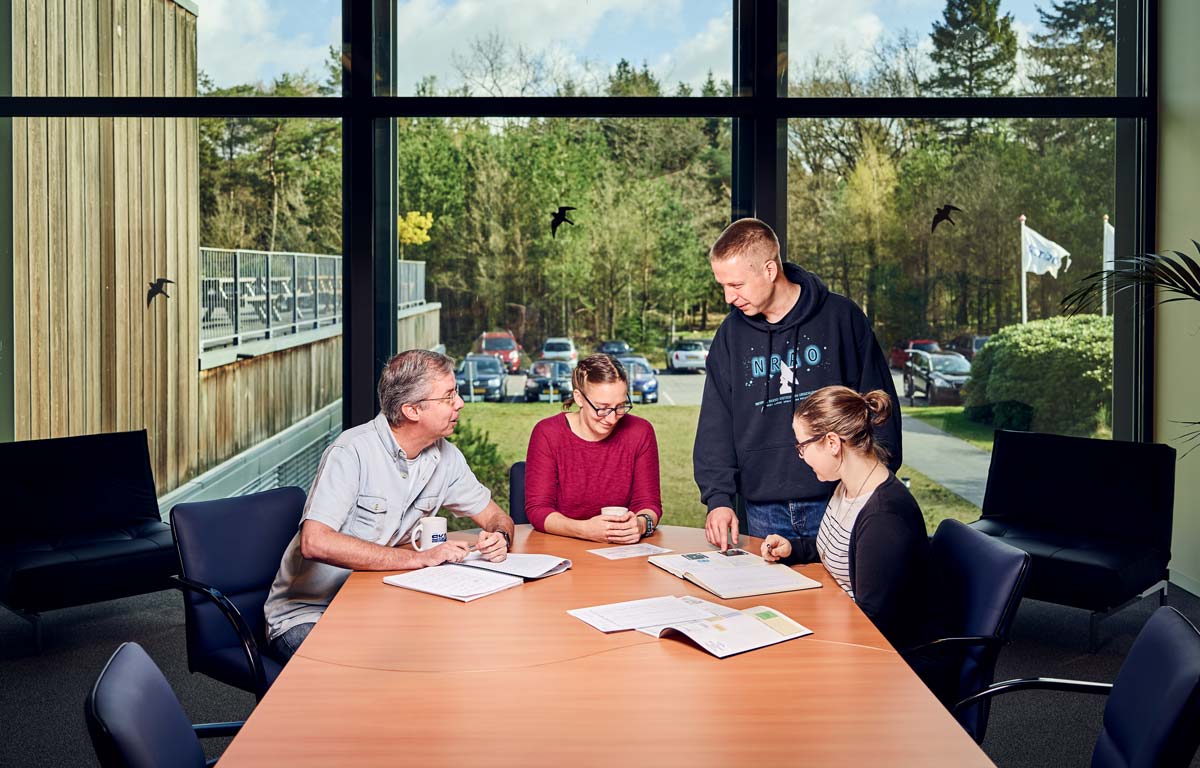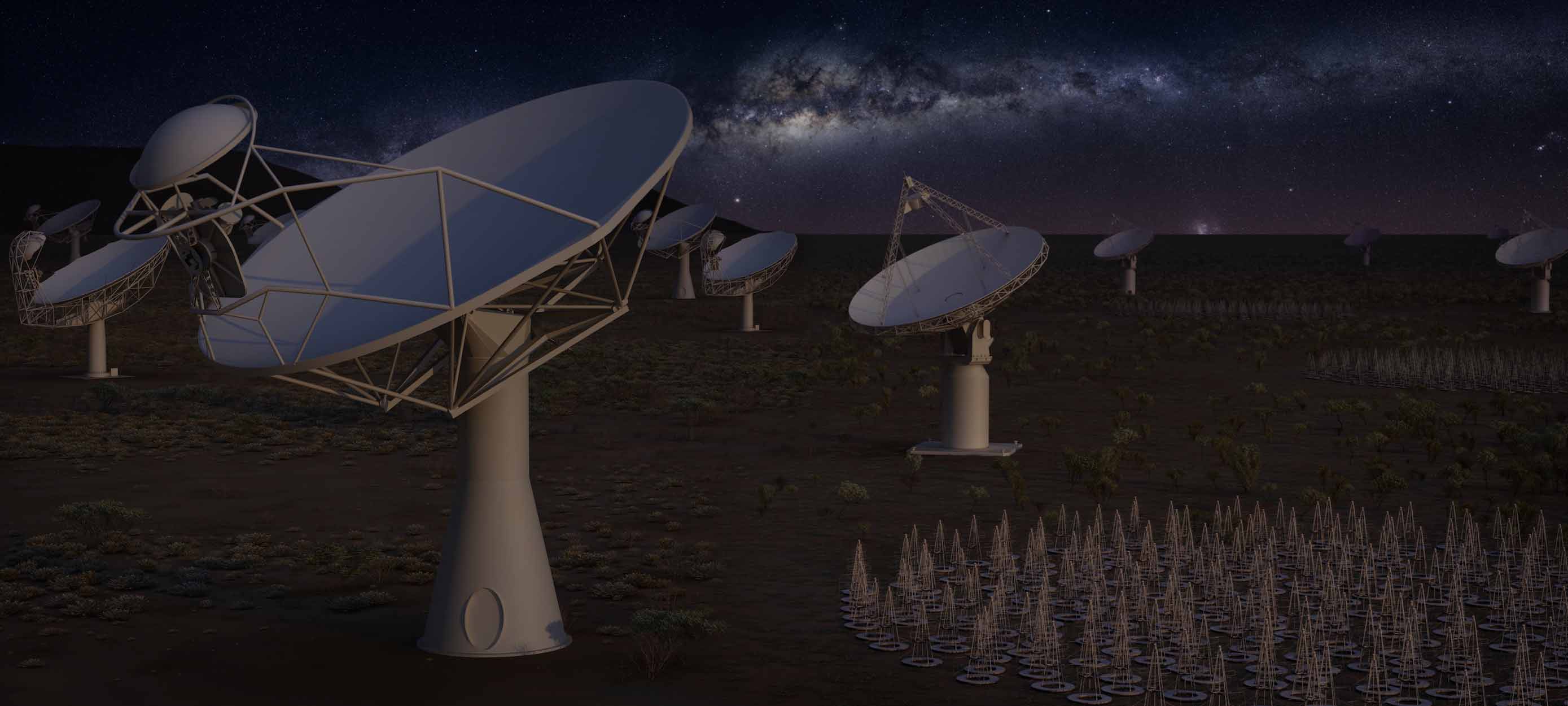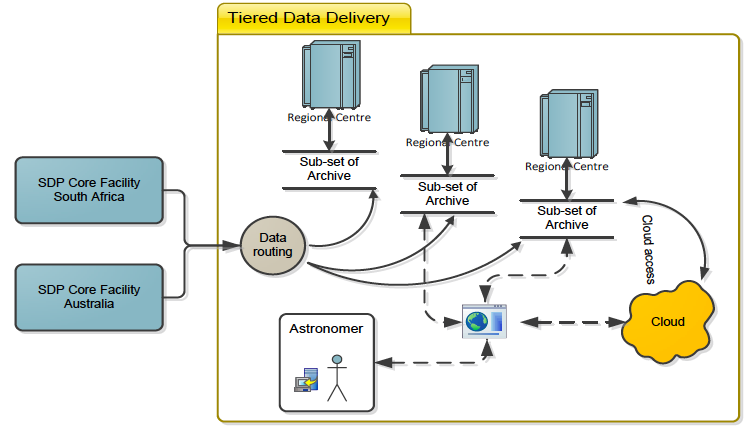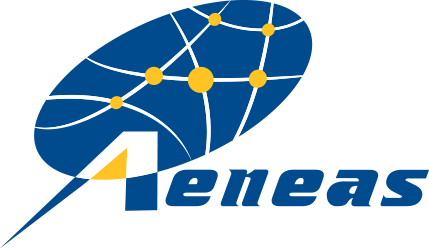SKA Regional Centres
The SKA Organisation (SKAO) is expected to adopt a tiered model for data and science support similar to that employed for other successful large infrastructures in particular CERN. Storage and computing resources associated with the operational SKA Observatory itself are expected to be highly constrained in order to keep up with SKA operations. Any further processing and subsequent science extraction by users will require significant, outside computing and storage resources in the form of SKA Regional Centres. In this model, SKA Regional Centres will play a role analogous to CERN’s Tier 1 sites and provide sufficient resources to store subsets of the SKA archive, support significant processing and postprocessing capability, and further distribute data to users and smaller Tier 2 sites. The specific capabilities required by the SKAO of affiliated SRCs are still being defined; however, based on the science drivers of the SKA project, we can anticipate a well informed model for the functions that a regional centre must support.


In this context, SKA Regional Centres will be a vital resource to enable the community to take maximal advantage of the scientific potential of the SKA. Moreover, within the tiered SKA operational model currently being considered, the SRCs will provide essential functionality which is not currently provisioned within the directly operated SKAO facilities. Therefore, SRCs will form an intrinsic part of SKA operations and be the working interface for most scientists using the SKA (see Figure 2). As such, national investments in a distributed SRC across Europe could represent a significant contribution to SKA operations.
As the primary interfaces for extracting science, the ultimate success of the SKA will be directly coupled to the capabilities of these SRCs. Establishing a large-scale, distributed European Science Data Centre (ESDC) for SKA research represents an important opportunity to provide the astronomy community with the scale of computational infrastructure necessary to maximally exploit the scientific potential of the SKA. Within Europe, a joint effort provides the opportunity to utilize existing infrastructure in a uniform way, coordinate engagement with both European and national ICT communities and industry, and facilitate shared development and expertise. On a practical level, a European initiative to deploy a SKA research infrastructure opens the possibility to leverage national and European investments to support SKA science. Finally, a coordinated approach also offers the opportunity to increase support and engagement from the wider European scientific community.

Figure 1: An artist’s conception of the two types of radio telescope arrays to be constructed during Phase 1 of the SKA. During this first phase, thousands of radio dishes and stations of phased-array dipoles will be deployed across the deserts of South Africa and Australia, respectively.

Figure 2: Schematic illustrating the connections between the proposed SKA Regional Centres (SRCs) and the SKA primary archive sites. Note the SRCs are assumed to host subsets of the full SKA science archive.
